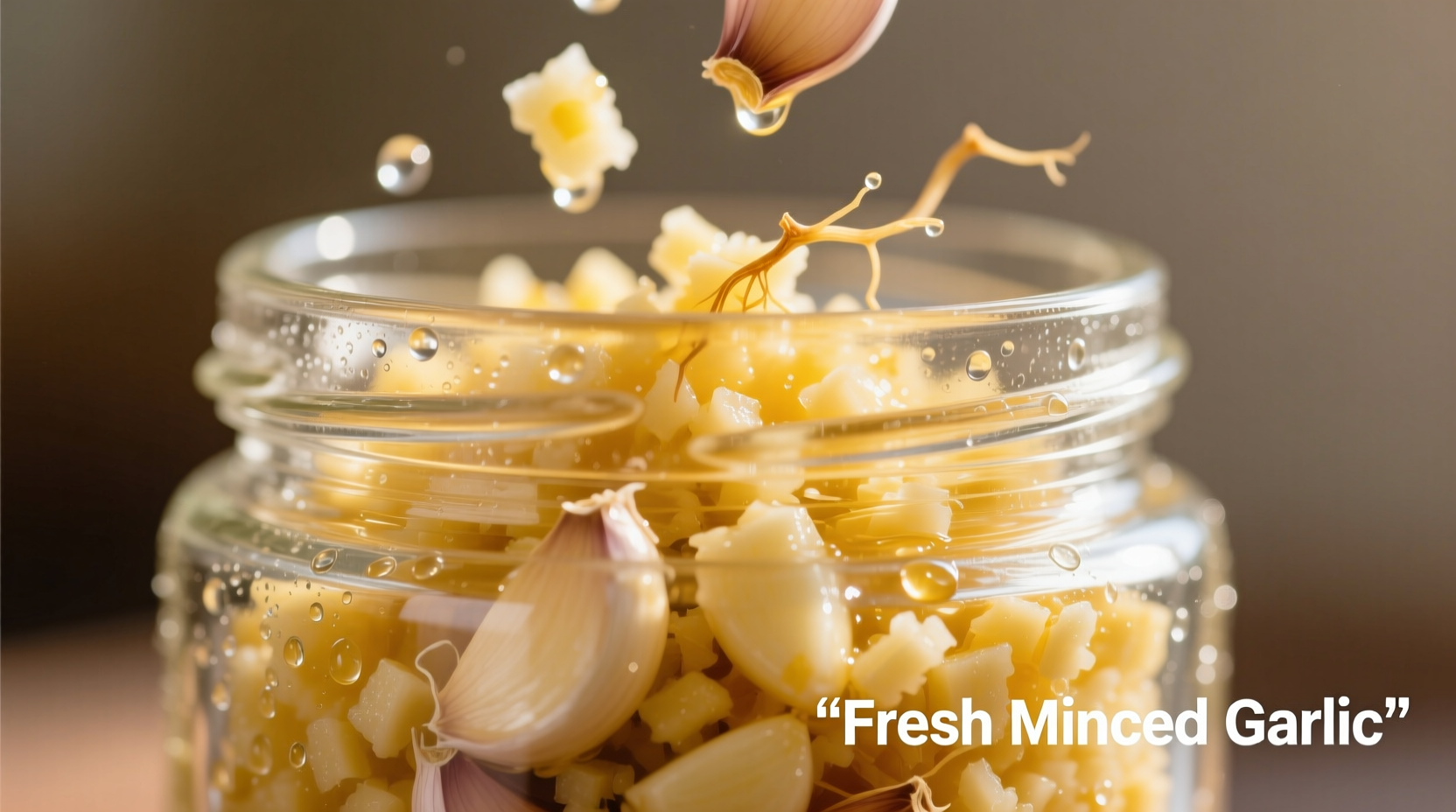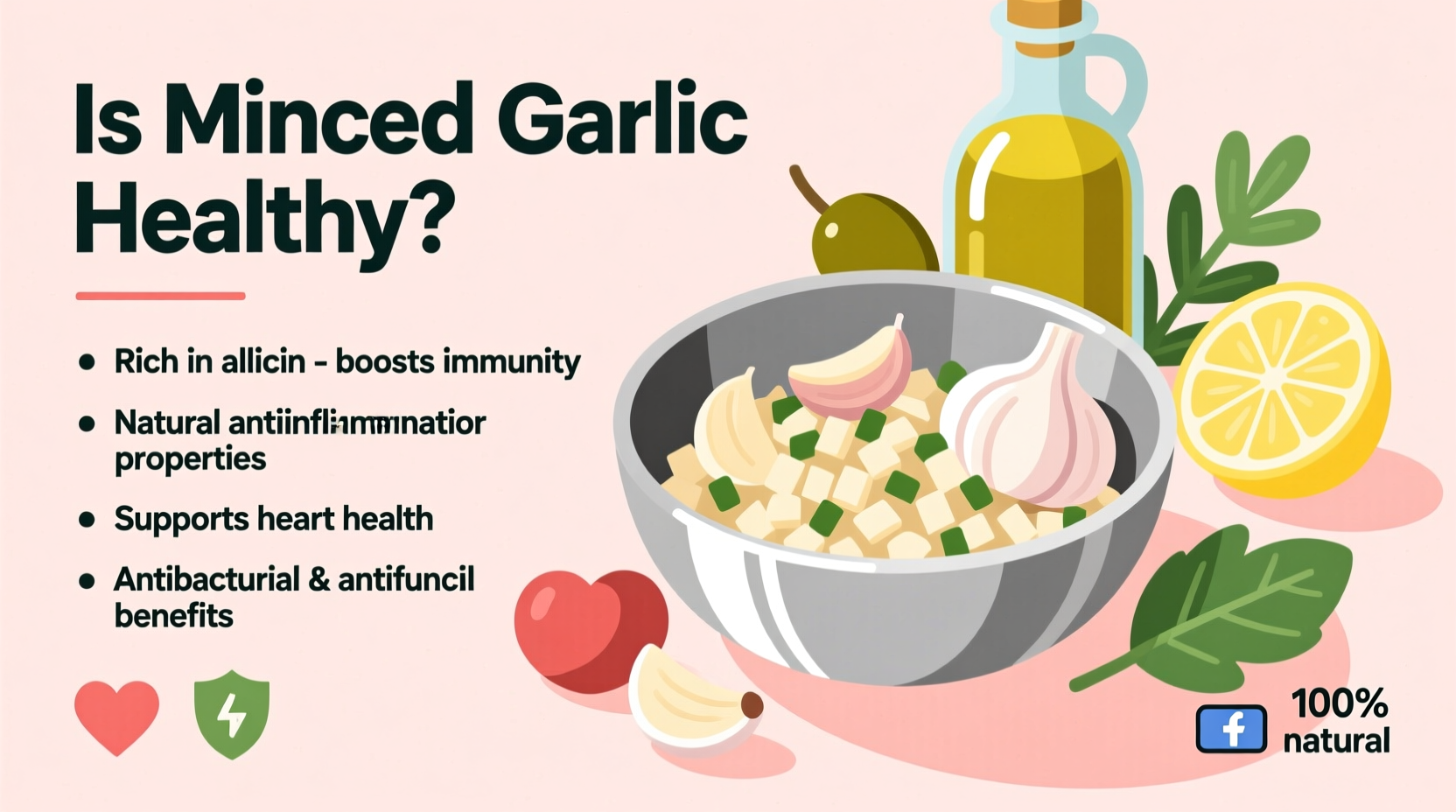Garlic has been celebrated for its medicinal properties for thousands of years, from ancient Egyptian healers to modern nutrition science. When you're standing in the grocery aisle wondering is minced garlic healthy enough to use regularly, the answer depends on how it's processed, stored, and used in your cooking. Let's explore exactly how minced garlic measures up nutritionally compared to its fresh counterpart.
The Science Behind Garlic's Health Power
Garlic's health benefits primarily come from organosulfur compounds, especially allicin, which forms when garlic is cut, crushed, or minced. This enzymatic reaction converts alliin into allicin—the compound responsible for garlic's distinctive smell and many health benefits.
According to research published in the Journal of Nutrition, allicin demonstrates:
- Antioxidant properties that combat oxidative stress
- Cardiovascular benefits including blood pressure regulation
- Antimicrobial effects against various pathogens
- Potential cancer-protective mechanisms
These benefits make understanding minced garlic vs fresh garlic nutrition important for health-conscious cooks.
Fresh vs. Minced: Nutritional Reality Check
When garlic is minced, the enzymatic reaction that creates allicin begins immediately. However, the stability of these compounds varies based on processing method. Here's how different garlic forms compare:
| Garlic Form | Allicin Availability | Shelf Stability | Practicality Score |
|---|---|---|---|
| Fresh, freshly minced | 100% (peak at 10-15 min after mincing) | 24-48 hours refrigerated | ★★★☆☆ |
| Homemade minced (stored) | 70-85% after 3 days refrigerated | 5-7 days refrigerated | ★★★★☆ |
| Commercial jarred minced | 50-70% (varies by brand) | 2-3 months refrigerated | ★★★★★ |
This minced garlic nutritional comparison shows that while fresh garlic offers maximum benefits initially, properly stored minced garlic maintains significant health properties. The USDA FoodData Central confirms that garlic's core nutrients—vitamin C, vitamin B6, manganese, and selenium—remain largely stable regardless of form.

Store-Bought Minced Garlic: What You Should Know
Commercial jarred minced garlic health profiles vary based on preservation methods. Most brands use one or more of these techniques:
- Acidification (vinegar or citric acid) - preserves color but may slightly reduce allicin formation
- Freeze-drying - maintains compounds but requires rehydration
- Oil preservation - convenient but carries botulism risk if improperly handled
The National Center for Home Food Preservation notes that commercially processed minced garlic typically contains 50-70% of the allicin potential of fresh garlic, depending on processing methods. Always check labels for additives—pure minced garlic with only garlic and water or vinegar represents the healthiest commercial option.
Maximizing Health Benefits with Minced Garlic
You can significantly boost the health value of minced garlic with these evidence-based techniques:
- Let it rest: After adding minced garlic to your dish, wait 10 minutes before applying heat to maximize allicin formation
- Low-temperature cooking: Sauté minced garlic in oil below 140°F (60°C) to preserve compounds
- Combine with lemon: The acidity helps stabilize beneficial compounds
- Store properly: Keep homemade minced garlic in an airtight container with a thin layer of olive oil
Research from the Agricultural Research Service shows these methods can preserve up to 85% of garlic's health-promoting compounds even when using pre-minced forms.
When Fresh Might Be Better: Context Boundaries
While is bottled garlic as healthy as fresh generally holds true for everyday cooking, specific situations favor fresh garlic:
- Therapeutic applications: For specific health concerns where maximum allicin is desired
- Raw preparations: In dressings or dips where flavor intensity matters
- Short-term storage: When you'll use it within 24 hours of preparation
However, for most home cooking purposes, properly handled minced garlic delivers comparable health benefits with greater convenience. The American Heart Association recognizes both forms as beneficial components of a heart-healthy diet when used as part of balanced nutrition.
Making the Healthiest Choice for Your Kitchen
The question does minced garlic lose nutrients has a nuanced answer: some nutrient degradation occurs, but not enough to significantly impact health benefits for most culinary applications. Your best approach depends on your specific needs:
- For everyday cooking: High-quality jarred minced garlic offers excellent convenience with good nutritional value
- For therapeutic use: Fresh garlic, minced and allowed to rest 10 minutes before consumption
- For meal prep: Homemade minced garlic stored properly maintains 70-85% of benefits for 5-7 days
Remember that consistent garlic consumption matters more than perfect form. Whether you choose fresh or minced, incorporating garlic regularly into your diet delivers proven health advantages supported by decades of nutritional research.











 浙公网安备
33010002000092号
浙公网安备
33010002000092号 浙B2-20120091-4
浙B2-20120091-4